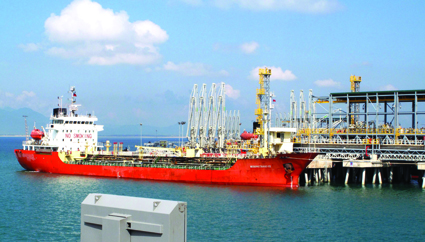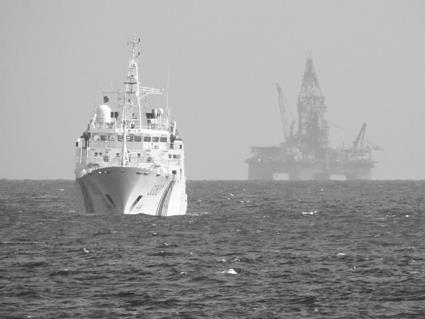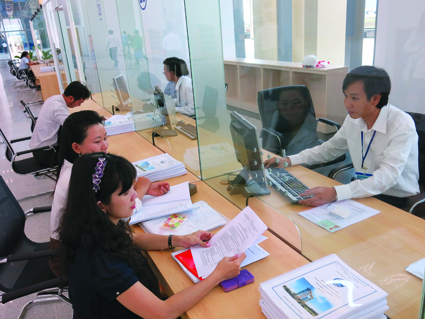Truong Minh Vu, Ph.D*
After the November 2014 mid-term election results, the United States (U.S.) Congress will be dominated by Republicans who are historically strong advocates of free trade in 2015. Hence, the conclusion of Trans-Pacific Partnership (TPP) is considered to be more plausible in early 2015. On the domestic front, whether the TPP can conclude swiftly depends on whether President Barack Obama and the Trade Representative can enjoy trade promotion authority (TPA) or fast track authority from the new congress. The Republican majority is considering a bill on fast track authority. If the new congress gives the green light, the bill will likely only be on the table in mid-January at the very earliest. With negotiations for the TPP between the 12 member countries reaching a critical stage, a major debate has broken out in the Vietnamese media. Scholars in Vietnam and abroad are discussing the economic tradeoffs for Vietnam, the implications for Vietnam’s growth model as well as the strategic implications behind this possible joining.
A win-win situation?
The debate about the TPP revolves around the question of what economic benefits Vietnam would enjoy if Hanoi participates in the completion of the TPP. Peter Petri’s seminal study “The Trans-Pacific Partnership and Asia-Pacific Integration: A Quantitative Assessment,” is being widely discussed in Vietnam. This study argues that Vietnam would be the largest beneficiary of the TPP. It is cited as the key reason Vietnam joined the negotiations, and has bolstered a growing number of pro-TPP voices among the public.
The TPP consists of partners that are complementary to the Vietnamese market, including the U.S. and Japan. These markets are expected to step up their demand for products that play to Vietnam’s strengths, including footwear, textiles, fisheries, and certain agricultural products. Right now, the fact that China, India, and Thailand remain outside the TPP provides Vietnam a sizable advantage.
But since early 2014, some doubts have begun to emerge among Vietnamese policymakers. Some economists question the ability to quantify tradeoffs for the economy and determine domestic losers under the TPP. Other experts question the model itself, arguing for instance, that Chinese trade competition in the long term has proven very difficult for Vietnam to manage. This should mean that the TPP’s “China exclusion” effect will become valuable, particularly in the textile, garment, and footwear industries, in which Vietnam’s competitiveness is expected to reap relative advantage over China’s.
Still, Vietnam’s economic benefits are far from certain. The “yarn forward” rules of origin being pressed by the U.S. in the negotiations put some of these apparent benefits in question. Vietnam’s supply chain is heavily dependent on Chinese textiles and other inputs, which could disqualify Vietnamese garment makers from access to zero tariffs under the TPP, and finding alternative suppliers is unrealistic in the short term.
Additionally, the TPP is not a gift from developed to developing countries. Vietnam will have to offer its negotiation partners some concrete tradeoffs in areas of importance to them to obtain what it wants. This will require serious deliberation about the implications of the tradeoffs for Vietnam’s economy. The hopes brought by joining in the TPP go beyond the short-term benefits and lie in larger institutional change. Vietnam’ participation in the TPP will undoubtedly support the government’s ongoing efforts at legal and political reform. Under the TPP, it is expected that Vietnam’s economy will encounter some challenges, including increased competition. The TPP would offer Vietnam considerable advantages in the areas of aquaculture, coffee beans, pepper, and rice. But Vietnam’s livestock industry has been lagging far behind and is unlikely to survive competition without immediate reform.
For Vietnam, joining the TPP is the second step of doi moi, or renovation, launched by the Communist Party in 1986. Truong Dinh Tuyen, the former trade minister and widely referred to as “Mr. WTO” thanks to his key role in Vietnam’s accession to the World Trade Organization, emphasizes that renovation is an interconnected process between politics and the economy. He argues that joining the TPP will mean opening the door to more competent, transparent governance and pressure to overhaul domestic corporations to be more competitive. Crucially for Tuyen, TPP could provide new impetus for doi moi 2.0.
 |
Prime Minister Nguyen Tan Dung receives Minister in charge for Trade of Asia-Europe Economic Committee Andrei A. Slepnhev, who is head of the FTA negotiation delegation__Photo: Duc Tam/VNA |
The TPP may provide the Vietnamese Government with leverage to reform its state-owned enterprises (SOEs). Over the last five years, the inefficiency of Vietnamese SOEs has been fully exposed to the public. Even before Vietnam joined the TPP negotiations, restructuring SOEs was seen as vital if the economy was to continue to develop. Earlier this year, Prime Minister Nguyen Tan Dung stressed many times that the Government would endeavor to complete its SOE “equitization” (read privatization) process within the next two years. The target is for 500 SOEs. A few leading examples would include Vinamotor, Vietnam Posts, Telecommunications Group (VNPT) and Vietnam Airlines. The most prominent impediment lies within the mindset of the SOE owners. Most enterprises listed in the 2012-2015 equitization effort are still seeking to postpone the process. As reasons they cite the need to preserve state capital and the importance of maintaining economic stability, both of which are backed by the Constitution. The Vietnamese government will have a hard time sacrificing the SOEs, considered its “children,” especially when the children are screaming for protection.
Seeking a positive-sum game
For those who believe that the TPP is not only an economic but also a political and strategic free trade agreement (FTA), the economic benefits are ancillary. In the wake of the ongoing power shift within the region, the TPP is also considered by the Vietnamese elite and scholars as a “soft balancing” strategy against China’s growing assertiveness. The constantly fluctuating strategic environment has put Vietnam in a difficult position, especially in regards to recent incidents in the South China Sea.
In fact, the debate among Vietnamese pundits goes even further, with some arguing that the TPP is the most appropriate framework for the time being to propel Vietnam-U.S. relations both bilaterally and multilaterally. That may be reasonable. There are still several impediments to closer ties between Vietnam and the U.S. For one, Vietnam’s political affiliation with China is still a consideration. The long-time “Three No’s” - Vietnam’s non-alliance policy - is also an issue. This is where the TPP comes in as a “softer,” multilateral approach, which focuses more on trade to help minimize unexpected consequences.
Yet despite repeated calls for progress, the outlook for promoting U.S.-Vietnam bilateral relations via the TPP is very murky, as is the chance of using the trade bloc as a “soft alliance” against China. The negotiation process has been sluggish, with multiple missed deadlines. The process has put the plausibility of the TPP into some doubt, which is probably why a Vietnam-U.S. bilateral channel has been re-booted over the last couple of months.
TPP negotiations slowing down create a challenge for Vietnam. Faced with these unexpected delays from the previously anticipated conclusion of the TPP, Vietnam’s Government has decided to fast-track other already in progress alternatives, including free trade talks with the European Union, South Korea, and the Russia-led Customs Union, as three promising alternative markets for Vietnam. Negotiations with the EU have reached a turning point after Prime Minister Nguyen Tan Dung’s visit to the EU last September, which resulted in high-level political commitments from both sides to conclude a Vietnam-EU FTA in 2015. This is important for both diplomatic and strategic reasons. It helps speed up negotiations on technical terms. Negotiations with the Customs Union, whose members include Russia, Belarus, and Kazakhstan have also accelerated. In the southern island of Phu Quoc off Vietnam’s coast in early December, the 8th negotiation round between Vietnam and Russia was conducted, in which leaders from both negotiating teams have agreed to quickly resolve remaining technical issues in order for the agreement to be signed in early 2015.
The benefit of opening another market needs to be understood in this term: Vietnam would pay a higher cost of missed opportunities, especially after other new trade initiatives led by China are emerging. On January 1, 2010, the ASEAN-China FTA was formally established with the zero-tariff implementation between China and six founding member states of ASEAN, or over 90 percent of the products. For the less developed ASEAN members being Cambodia, Laos, Myanmar, and Vietnam, the zero-tariff policy for 90 percent of the Chinese products will be implemented in 2015 (and 2016). In 2014, the plan for the establishment of a free trade area encompassing China and the ASEAN nations had been first suggested by China’s President Xi Jinping at the APEC. Another big plan of Beijing is the building of the new two-headed Silk Roads across Asia and Europe, which include Maritime Silk Road to connect the Pacific, the Indian Ocean and the Atlantic and Silk Road economic belt, stretching southwest from Central Asia to northern Iran, Iraq, Syria, and Turkey.
For ASEAN states and Vietnam, an either-or strategy - in terms of leaning only on established organizations or relying on new institutions created by China alone is risky, because it creates a zero-sum game, which forces them to take the one side between China and the U.S.. Indeed, the task of small and medium states in the region is not to prevent China’s rise from changing the world but to ensure that such projects evolve within the existing regional order in a way that maximizes peace and welfare for everyone.-









